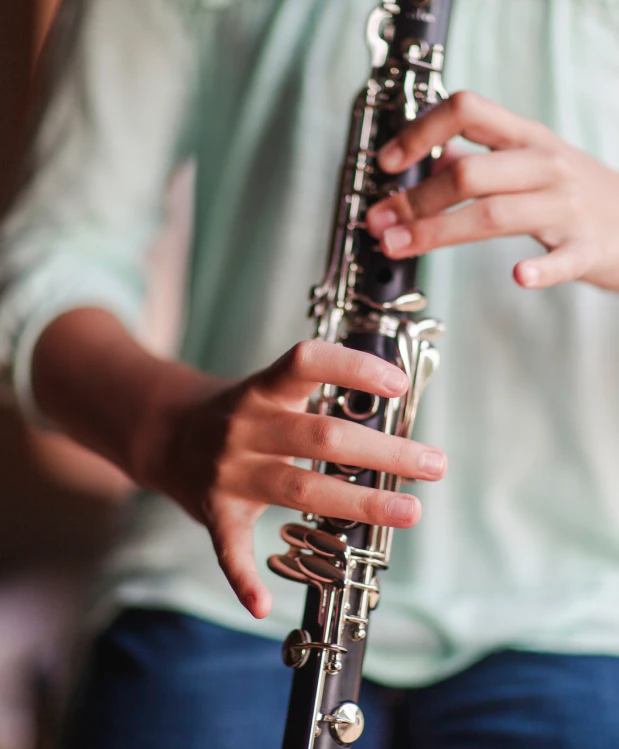Clarinet classes in Dubai
Learning clarinet at Oohlala offers an enriching experience that combines technical skill development with artistic expression. Students, children and adults alike will recieve personalized instruction from our teachers who will provide insights into the nuances of clarinet performance, ranging from mastering breath control and finger placement to learning and understanding the intricacies of tone and articulation.

The best age to start learning the clarinet is typically around 9 to 10 years old. At this age, most children have developed enough lung capacity and finger dexterity to handle the instrument. However, younger students with a keen interest and appropriate physical development can also start learning, especially with beginner-friendly models like the plastic clarinet or the smaller E-flat clarinet. Adults can start learning at any age as long as they have the desire and commitment to practice.
No prior musical experience is required to start learning the clarinet, although it can be helpful. Beginners will learn the basics of reading music, rhythm, and ear training as part of their instruction. If you already have experience with another instrument, especially a woodwind or brass instrument, it might make learning easier as you’ll already be familiar with breath control and musical notation.
The time it takes to learn the clarinet depends on your goals and practice habits. Beginners can expect to play simple songs within a few weeks, while achieving a comfortable level of proficiency typically takes 1-2 years of regular practice. Becoming highly skilled or professional usually requires several years of dedicated study and practice, with guidance from our qualified teachers.
A beginner clarinet typically costs between 700 AED and 2200 AED. Plastic clarinets are more affordable and are recommended for beginners due to their durability and ease of maintenance. If you’re considering a higher-quality instrument, wooden clarinets start around 3700 AED and can go much higher, but they offer better tone and are preferred by advanced players. Oohlala has a selection of clarinets, plastic and wooden for teaching our students.
A beginner clarinet typically costs between 700 AED and 2200 AED. Plastic clarinets are more affordable and are recommended for beginners due to their durability and ease of maintenance. If you’re considering a higher-quality instrument, wooden clarinets start around 3700 AED and can go much higher, but they offer better tone and are preferred by advanced players. Oohlala has a selection of clarinets, plastic and wooden for teaching our students.
When buying a clarinet for beginners, consider the following factors:
One of the hardest parts of learning the clarinet is mastering the embouchure, which is the way you shape your mouth and use your lips to produce sound. Achieving the correct embouchure requires practice and can initially be challenging as you develop the right muscle control. Other challenges include developing breath control, learning to play with proper finger technique, and managing the coordination between reading music and playing the instrument.
As a beginner, you should aim to practice the clarinet at least 20-30 minutes a day, 5-6 days a week. Consistent practice helps build muscle memory, improve breath control, and reinforce learning. It’s important to practice regularly rather than in long, infrequent sessions. As you progress, you can gradually increase practice time to 45 minutes to an hour daily, focusing on different aspects such as scales, tone exercises, and pieces.
Choosing the right reed is essential for sound production and ease of playing. Here are some tips:
Copyright © 2024 Oohlala Fine Arts ®
Powered By Hivego.Agency